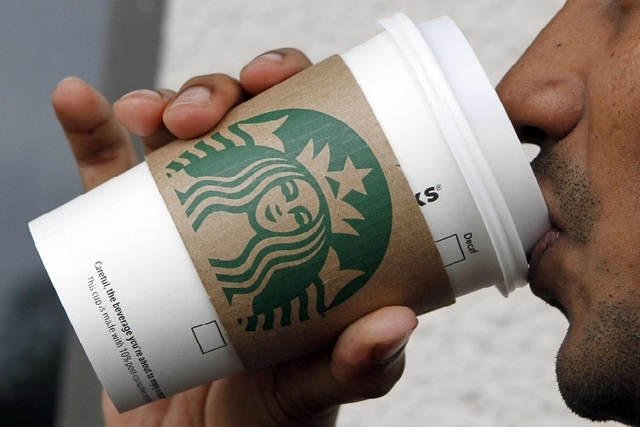Starbucks college plan offers discounts, not money

NEW YORK — The scholarship portion of a new education program Starbucks is offering to help workers pay for an online degree consists of a discount from Arizona State University, not money from the chain.
The Seattle-based company this week unveiled a benefit that is designed to let college juniors and seniors complete their degrees at Arizona State, with all of the costs covered. For the freshman and sophomores years, workers would pay a reduced tuition.
A major aspect of the program is an upfront scholarship that Starbucks said is an investment between itself and Arizona State. When asked how much of that scholarship portion the company is providing, Starbucks initially said financial terms weren’t being disclosed.
Following the announcement, however, Arizona State University President Michael Crow told The Chronicle of Higher Education that Starbucks is not contributing any money toward the scholarship portion. Instead, Arizona State will essentially charge workers less than the sticker price for online tuition.
Starbucks confirmed Thursday that the scholarship is a reduced tuition rate from Arizona State. It estimates the reduction in tuition would average about $6,500 over two years for total tuition of $30,000 for the freshman and sophomore years. For the junior and senior years, Starbucks said the discount provided by Arizona State would amount to about $12,600 of the $30,000 total.
To cover the remainder in the freshman and sophomore years, workers would apply for financial aid, such as Pell grants, and pay for the rest either out of pocket or by taking out loans. Starbucks would bear no costs in those years.
For the junior and senior years, Starbucks would reimburse workers for whatever tuition they had to cover either upfront or through loans, once they complete 21 credits.
Matt Ryan, chief strategy officer for Starbucks, said Thursday that for a worker’s junior and senior years, the company could potentially cover up to 58 percent of the tuition, in cases where workers didn’t qualify for grants.
If workers did qualify for grants, he said Starbucks could be responsible for very little, if anything. He noted that workers financial situations can vary greatly.
Laurel Harper, a Starbucks spokeswoman, said previously that the company’s analysis with ASU found most of its workers would qualify for federal Pell grants.
A representative for Arizona State deferred questions about the program to Starbucks.
The program, which has been widely praised because education benefits are rare for low-wage workers, brought attention to the struggles people face in paying for college. It is unusual because workers can pick from 40 different degree programs and aren’t required to stay with Starbucks after they complete their degrees.
It’s not clear how much the program will end up costing Starbucks. But Ryan said the company expects that it will “for sure” be a much bigger investment than its current tuition reimbursement program, which will be phased out by 2015.
That program offers up to $1,000 a year to take classes at City University of Seattle or Strayer University, with no limit on the number of years they can apply. Since it was rolled out in October 2011, Starbucks said the program has cost it $6.5 million.
Mark Kantrowitz, publisher of EdVisors.com, a website about paying for college, said the program could benefit all parties involved.
Workers could get a chance at a degree from Arizona State University at a reduced rate. Arizona State could get a revenue boost from federal aid and out-of-pocket costs workers and Starbucks later pays. And Starbucks could attract a better pool of workers and burnish its corporate image.
Starbucks said its workers are “embracing this benefit with overwhelming excitement; ASU has seen an enormous uptick in interest.”
————
Follow Candice Choi at www.twitter.com/candicechoi












